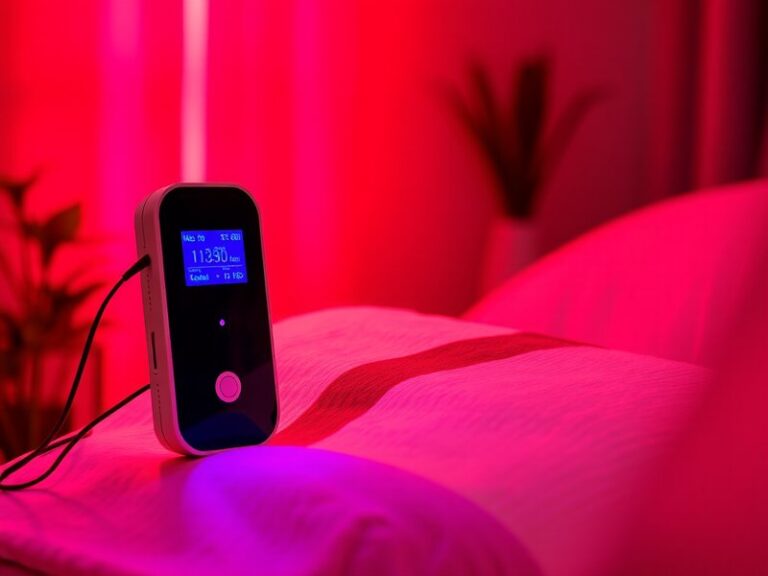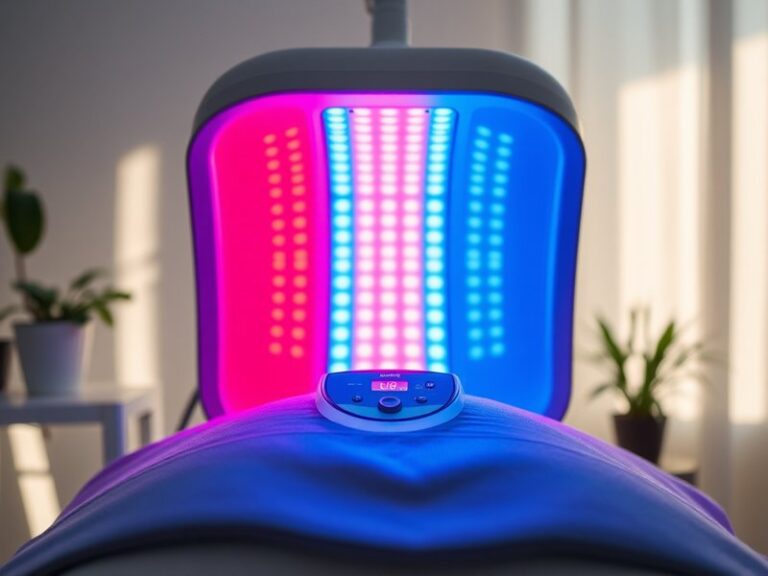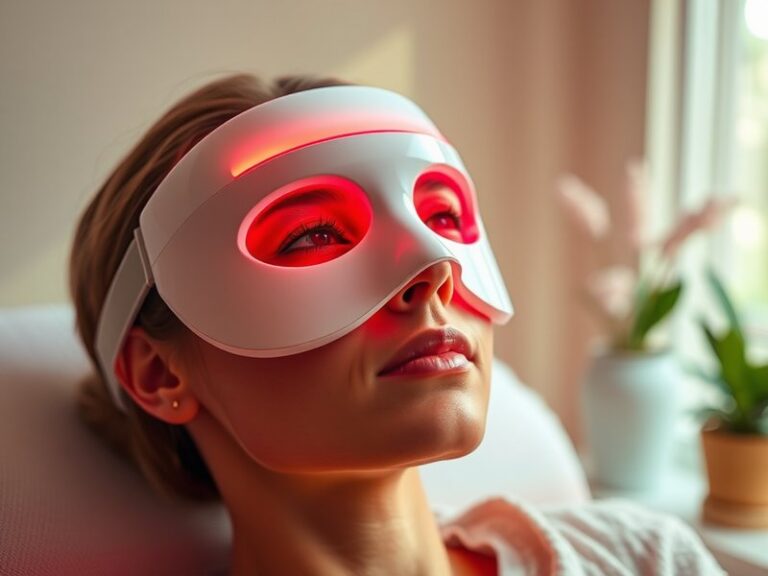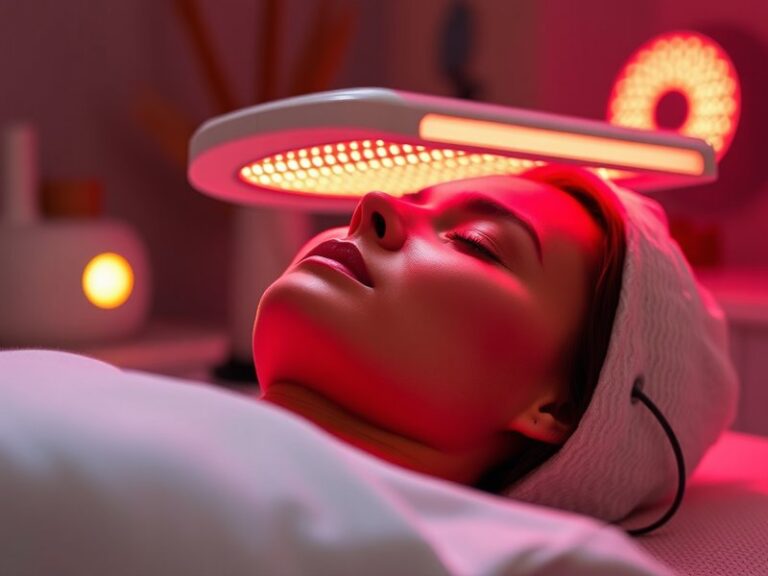Does Insurance Cover Red Light Therapy?
Does Insurance Cover Red Light Therapy?
Have you ever wondered if red light therapy could be a covered expense under your health insurance? As the popularity of this innovative treatment grows, so does the confusion surrounding its coverage. This article dives into the details of red light therapy, its potential benefits, considerations for insurance coverage, and alternative treatments.
Key Takeaways
- Insurance coverage for red light therapy varies significantly between providers and specific health plans.
- Red light therapy may benefit various medical and cosmetic conditions, prompting some insurers to cover it under specific circumstances.
- Understanding your insurance policy, consulting with healthcare professionals, and exploring alternative treatments are crucial steps in deciding whether to pursue red light therapy.
What is Red Light Therapy?
Red light therapy (RLT) involves the use of low-wavelength red light to stimulate healing, reduce inflammation, and promote cellular regeneration. This non-invasive therapy penetrates the skin, encouraging metabolic processes in cells, which can enhance recovery and alleviate pain.
There are several applications for red light therapy, including:
- Pain Management: Used in conditions like arthritis, migraines, and muscle pain to reduce discomfort and inflammation.
- Skin Conditions: Effective for acne, eczema, and psoriasis, RLT promotes skin healing and reduces inflammation.
- Wound Healing: Assists in faster recovery of cuts, burns, and surgical wounds.
RLT typically utilizes devices such as handheld units, panels, and even more sophisticated machinery found in clinical settings.
What are the Benefits of Red Light Therapy?
Red light therapy offers a range of potential benefits that make it an appealing treatment option for many patients. Here are some key advantages:
Pain Reduction
RLT has been shown to alleviate pain associated with various conditions. Studies indicate substantial improvement in pain levels for patients with chronic conditions when treated with RLT.
Improved Skin Health
Many users report enhanced skin tone and texture following RLT sessions. It can help reduce signs of aging, diminish wrinkles, and improve the overall appearance of the skin.
Enhanced Muscle Recovery
Athletes frequently use red light therapy to speed up muscle recovery post-exercise. Its anti-inflammatory properties can lead to shorter recovery times and improved performance.
Boosted Hair Growth
Research suggests that RLT can stimulate hair follicles, leading to increased hair regrowth for those experiencing hair loss conditions like androgenetic alopecia.
Is it Possible to Get Insurance Coverage for Red Light Therapy?
The feasibility of obtaining insurance coverage for red light therapy largely depends on the individual’s insurance policy and the specific medical need. Although many health insurance plans do not explicitly cover RLT, exceptions exist based on the treatment’s intended use, such as for pain management or chronic conditions.
What are the Advantages of Insurance Coverage?
- Lower Out-of-Pocket Costs: Coverage can significantly reduce the financial burden on patients, making the treatment more accessible.
- Professional Guidance: Engaging with providers may ensure that patients receive appropriate treatments tailored to their needs.
- Increased Acceptance: Wider insurance coverage could lead to greater recognition and acceptance of RLT within the medical community.
What are the Disadvantages of Insurance Coverage?
- Limited Coverage: Many plans may not cover RLT, especially for cosmetic purposes, leading to out-of-pocket expenses.
- Insurance Denials: Patients may face challenges, including claims denials and the burden of appeal processes.
- Variable Criteria: Different plans may have different eligibility criteria, adding confusion for prospective patients.
What are the Things to Consider Before Seeking Red Light Therapy?
Before pursuing red light therapy, there are essential factors to consider to ensure it aligns with your needs and health goals.
Consulting Healthcare Providers
It’s crucial to discuss your interest in RLT with a healthcare provider. They can help assess your specific condition and gauge whether RLT is an appropriate treatment option.
Reviewing Insurance Policies
Thoroughly examine your insurance coverage details. Review the policy documents for stipulations regarding therapy types, and consult with your insurance provider to clarify coverage questions.
Researching Qualified Providers
Look for certified professionals who offer RLT in clinical settings. Ensuring the practitioner has the proper training and equipment is fundamental for safety and effectiveness.
What are the Alternatives to Red Light Therapy?
For those unsure about red light therapy or seeking additional options, several alternative treatments may also provide benefit.
Cold Laser Therapy
Also known as low-level laser therapy, cold laser therapy uses similar principles to red light therapy but operates at different wavelengths. It is commonly used for pain management and support in wound healing.
Get the lowdown on Does Red Light Therapy Youthen?
Physical Therapy
Physical therapists can offer a range of treatments designed to alleviate pain and promote recovery through tailored exercises and rehabilitation techniques.
Radiofrequency Therapy
This treatment utilizes radio waves to stimulate healing and rejuvenate the skin. It is often used in cosmetic procedures but may also provide therapeutic benefits for various conditions.
Conclusion: Is it Recommended to Seek Insurance Coverage for Red Light Therapy?
While red light therapy holds promise for numerous conditions, insurance coverage is inconsistent. Patients are encouraged to explore their specific insurance plans, consult with healthcare professionals, and evaluate alternative treatments to make informed decisions about managing their health needs.
Frequently Asked Questions
What conditions can red light therapy treat?
Red light therapy is utilized for a variety of conditions including chronic pain, skin disorders, and to promote healing for wounds.
Read our thoughts on Red Light Therapy Frequency
How often should I undergo red light therapy?
The frequency of treatments can vary based on individual needs and conditions. Many practitioners suggest sessions ranging from 2-3 times per week for optimal results.
Are there any side effects associated with red light therapy?
RLT is generally considered safe, with few reported side effects like mild redness or irritation. However, it is always best to discuss potential side effects with a healthcare provider.
What is the typical cost of red light therapy?
Costs can vary widely depending on the location and provider, generally ranging from $25 to $100 per session if not covered by insurance.
Can I perform red light therapy at home?
Home devices for red light therapy are available and can be effective for some users. However, checking their efficacy and safety is essential before starting any home treatment.






